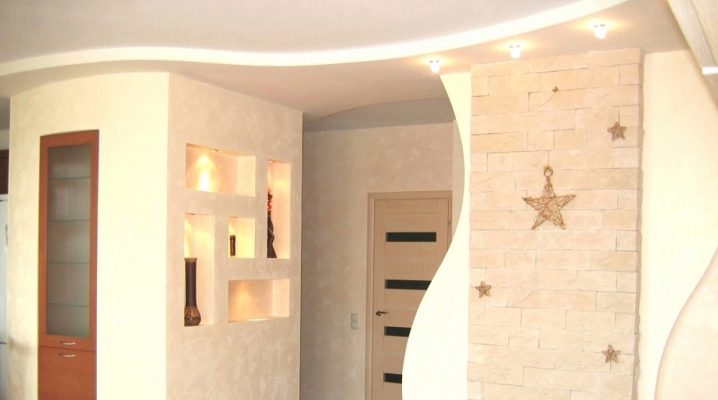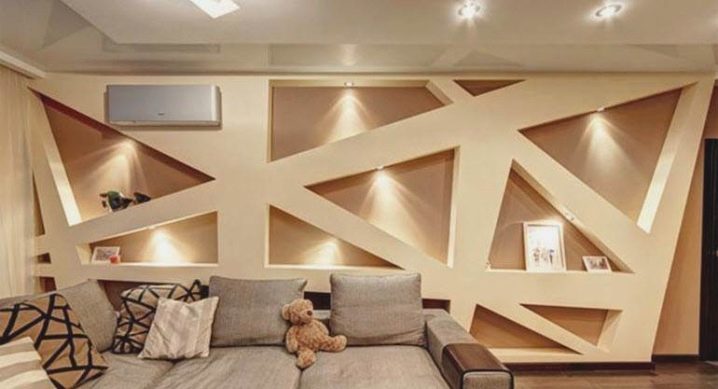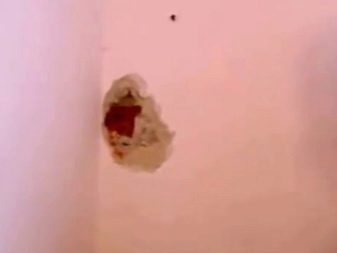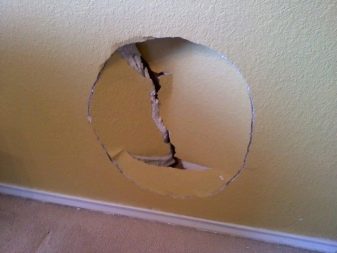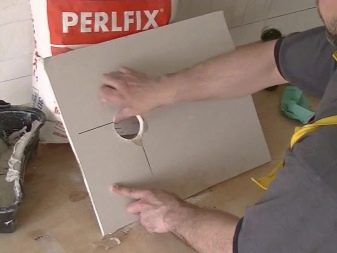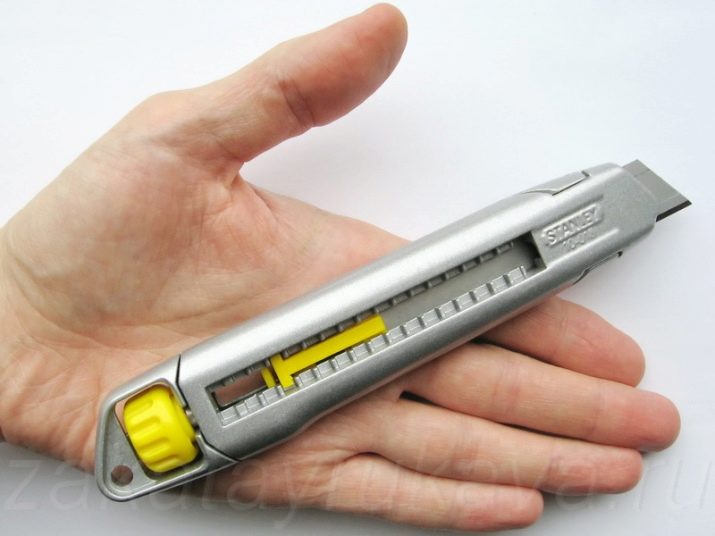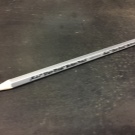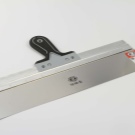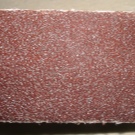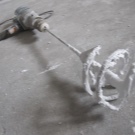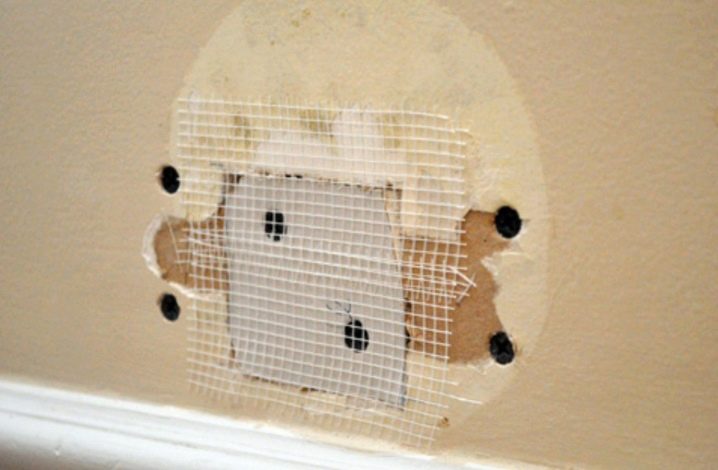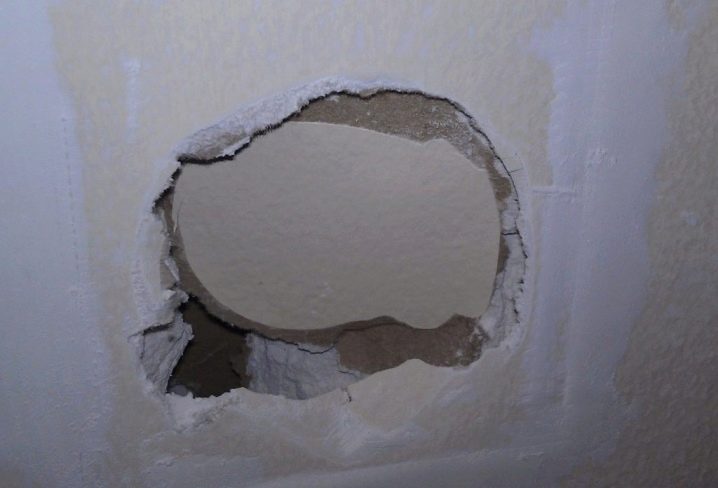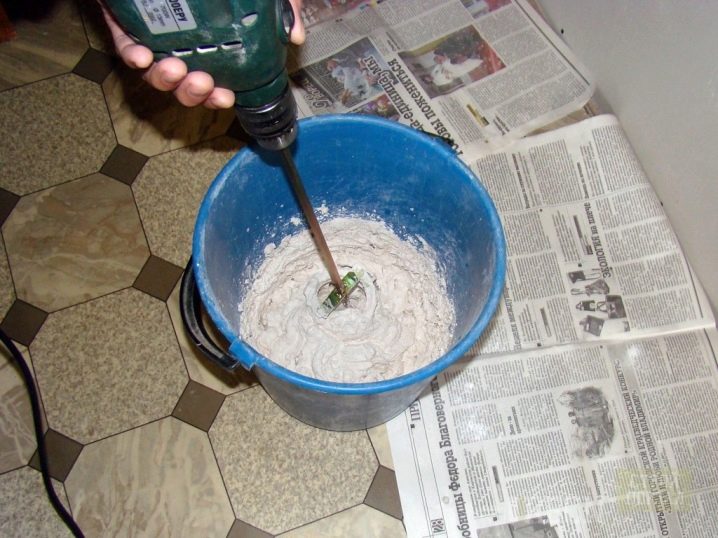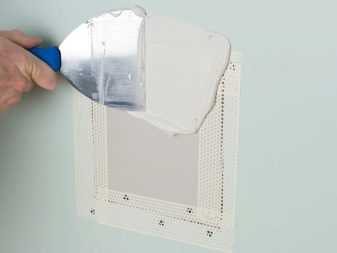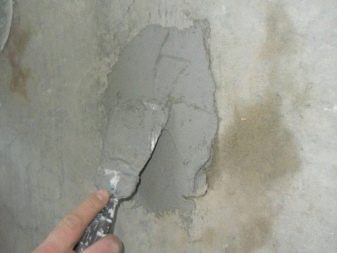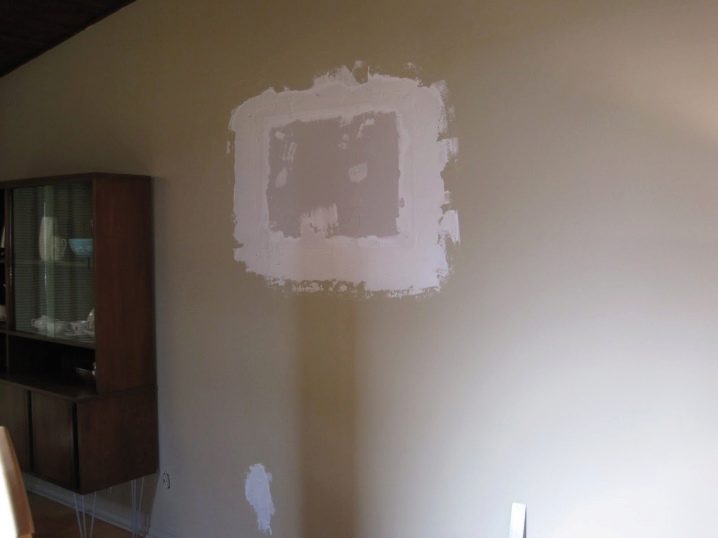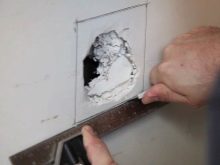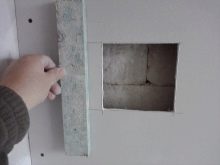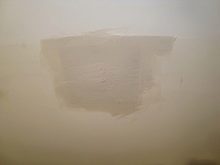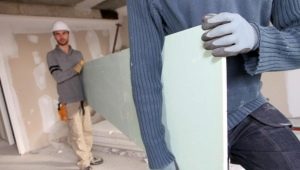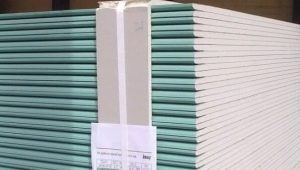Repair damage in the form of holes in drywall on the wall
Currently, such building materials as drywall is very popular in the repair. But still he has one important drawback, which is the lack of strength. As you know, any mechanical impact on this material may cause damage, cracks or dents.
In the article we describe in detail how to seal holes of various sizes in a plasterboard wall.
The main methods of termination
Defects in the drywall sheet may appear, for example, when rearranging furniture or other interior objects when shocks occur. The result is a hole in the wall. With the formation of such defects do not need to panic, as there are ways to help get rid of such holes.
When repairing damaged areas, you must first consider their size.The reasons for the formation of such holes may be mass, but they will not influence the process of their elimination. Often, holes appear in walls more often than on ceilings.
There are only two ways to mask the holes in drywall. These methods differ only in that the former is used to conceal holes with a diameter of less than 15 cm, and the latter is used for damage of large sizes.
In the first case, the hole can be repaired with special tools and materials. It is enough to put a putty with a trowel on the reinforcing mesh, which is mounted at the site of damage to the drywall.
It is necessary to fill this hole carefully so as not to damage another part of the material surface.
In the second case, a drywall patch is used, which is cut and installed in a damaged place.
Tools and materials
Before repairing drywall damage, you need to make sure that you have the following tools:
- construction knife;
- centimeter;
- pencil;
- putty knife;
- sandpaper;
- drill for mixing solutions.
As materials suitable:
- self-tapping screws;
- wooden bar;
- reinforced mesh;
- drywall sheet;
- putty.
- gypsum.
Consider that in rooms with high humidity it is necessary to apply only a moisture resistant coating.. With all these tools and materials, you can easily repair even the biggest holes yourself.
But before you begin to perform work, you must carefully prepare the surface of the wall.
Surface preparation
First of all, in order for the holes to no longer appear, it is necessary to get rid of the cause of their occurrence. For example, if there is any movable furniture near the wall (for example, a rocking chair), then a hole will appear constantly.
There should be no hanging edges in the damaged area.. Therefore, it is first necessary to clean the hole from various debris, since residual dust and pieces of gypsum can significantly complicate the repair of damaged areas.
Then it is necessary to dilute the gypsum solution in a specific sequence:
- Type a bowl of warm water.
- Pour the plaster mix into the water in the required proportion (the instruction for preparation is indicated on the material packaging).It is not recommended to pour water into the powder, otherwise there may be a large amount of sediment. You can use and ready-made mixture.
- Mix the mortar to a thick consistency with a construction mixer.
Now go directly to the elimination of damage.
How to fix the defect?
Minor damage
Each specialist in the installation of this building material will be able to patch a hole of a small size in drywall. But even during the repair, various minor damages often occur. If there are cracks in the wall, then it is necessary to slightly expand them with a construction knife.
In the case when the hole arises from the ingress of water onto the material, it is no longer possible to restore it, so the soaked areas are completely removed up to the solid base.
If a minor hole is formed during the operation of the drywall, then its installation is performed in the following sequence:
- in place of a hole, a reinforcing mesh is glued to the surface of the material;
- after the glue dries out, putty is applied with a spatula;
- after the first layer of putty hardens, you need to repeat the action,but already with the application of the plaster solution to the area where there was damage;
- grouting of this surface is carried out only after the solution is completely dry.
In this way, any minor damage can be repaired so that there will not be the slightest trace of it. But how to eliminate a hole of a large size, because a light mesh will not stand a thick layer of gypsum mortar?
If we apply the method described above to close a hole that is larger than 15 cm in size, then when sagging mesh reinforcement to align the damaged section of the wall will be very difficult.
In order to repair such damage, it is necessary to make a patch of a properly selected plasterboard piece.
Big holes
The process of eliminating large holes takes place in several stages:
- On the surface of the damaged area is drawn markup in the shape of a rectangle. The length and width of the geometric figure should be slightly larger than the parameters of the hole or other unsuitable surface areas.
- With a construction knife, a hole is cut in the marking, the edges of which are grinded at an angle of about 45 degrees.
- Further, on a previously prepared drywall piece, a rectangular shape is drawn that corresponds to the parameters of the cut section.
- With the help of a construction knife or saw, a patch is neatly cut out, its edges are also eroded.
- Next, take the bars of wood. Their length should be 3-5 centimeters longer than the diameter of the hole in the wall.
- Bars are inserted from the back of the hole and attached to the sheet with screws. They will serve as a kind of emphasis so that the patch does not fall inside.
- The edges of the hole are covered with a thin layer of plaster or putty, and the patch is gently inserted inside. For a stronger fixation, the patch can be screwed to the bars with screws.
Final finish
Filling a hole in a plasterboard wall or holes in other areas is easy.
After the elimination of this problem, it is recommended to finish the repaired areas:
- The working surface is covered with primer and left to dry completely.
- Pre-cooked putty is applied to the site with a spatula. First, all irregularities and seams are smeared separately, and then the finishing layer of putty is applied to the entire area. The putty surface is left to dry completely.
- By means of an emery paper the restored surface is ground and leveled. When this occurs, the complete removal of excess putty.
- The area where the hole was located is covered with wallpaper or covered with another material so that the surface finish does not differ from the background of the intact place.
As a result of the work done, the damaged surface will be fully restored.
See how to fix the hole in drywall with your own hands in the next video.
